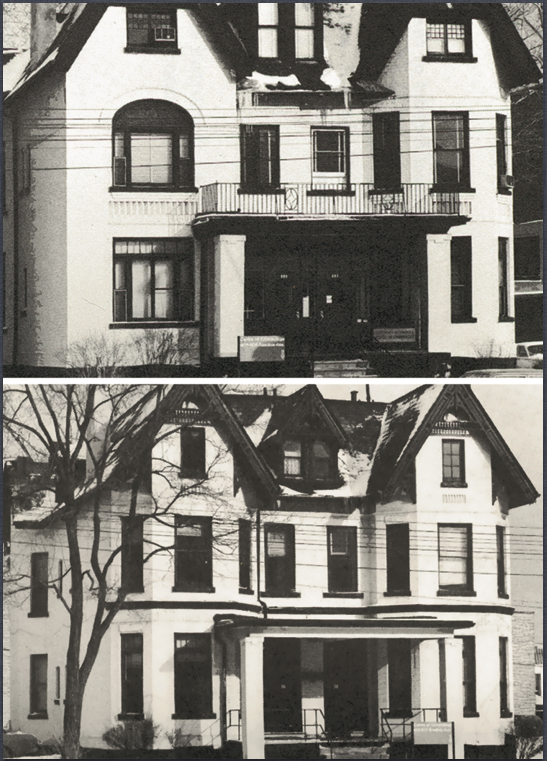The Centre has, over the decades of its existence, deservedly enjoyed a reputation as one of the world’s foremost research centres in criminology and sociolegal studies. The significance of that strength should not be overlooked, since there are no similar research centres that have over such a protracted period been globally renowned for extending frontiers of both focus areas.
— George Pavlich, Sally E. Merry, Delores Jones-Brown. UTQAP Cyclical Review: Report (2018) p.1

Founding
In 1963, the Centre of Criminology was established as a research and graduate teaching institution at the University of Toronto, the first of its kind in Canada.
The 1956 Fauteux Royal Commission on the parole system had recommended that universities become involved in the education and training of persons who could serve in the penal system, but nothing had yet been done in English Canada. The Ontario Department of the Attorney General and Department of Reform Institutions were interested in supporting a research institute, and the University of Toronto was prepared to have one.
Deans Caesar Wright of Law and John Hamilton of Medicine thought that if Toronto did not take the initiative it would be established at Queen’s University or at some other Ontario university.
John Ll. J. Edwards, an English-trained legal scholar then teaching at Dalhousie, was invited to become director. In it first year, the Centre was part of the Faculty of Law. It became part of the graduate school the following year, 1964, and later had its own separate quarters in adjoining houses on Spadina Avenue.
From the beginning, Edwards insisted that the centre not be located in any one division or be restricted to certain disciplines. “It was always an open question in my mind,” he wrote, “as to where the future contributions would originate.”
He recalled that one of the first telephone calls he received as director was from a professor in zoology. “I asked him,” Edwards wrote, “if he was quite sure that he wanted the Centre of Criminology.” “Yes,” the zoologist replied. “I have a problem concerning nature conservation and the use of criminal sanctions.”
The call convinced Edwards that his concept was the correct one. In the early years, the Centre attracted the active involvement of academics from a wide variety of disciplines apart from law, such as John Beattie of history, Tony Doob of psychology, Richard Ericson and Clifford Shearing of sociology, and Peter Russell and Peter Solomon of political science.
Edwards took the view that building up a multidisciplinary library collection was “of the greatest significance” in creating a strong research centre. A number of foundations, such as Ford and Donner, assisted financially with the library and the research program, as did both the Ontario and the federal government.
At various times, however, both levels of government tried to control the publication of the results of the research they were funding. Edwards, with the backing of the University, resisted all such efforts and succeeded in establishing what became the policy of the University in this area. Government sponsors, he argued, are entitled to comment on the research results and might delay publication for a short time, but should not have a veto on their publication.
Financing was a continuing problem – as it was for every centre and institute in the late 1960s – and in 1971 an MA program in criminology that would attract regular government funding was established.
Homes on Campus
As noted above, the Centre moved to its first permanent home at 607-609 Spadina Avenue in November 1965. With the continuing expansion of the research staff and library, a second house was acquired in September 1968 at 619–621 Spadina Avenue. In the summer of 1974, the Centre, along with several other departments, was re-located to the 8th floor of the new John P. Robarts Research Library and the Spadina houses were torn down to make way for the new Athletics Centre.
 The Centre remained in the Robarts Library for 33 years until once again the space was needed by the University for re-development. In the summer of 2007, the Centre moved to its present location on the 2nd floor of the newly-renovated Canadiana Gallery with our library and shared classroom on the ground floor.
The Centre remained in the Robarts Library for 33 years until once again the space was needed by the University for re-development. In the summer of 2007, the Centre moved to its present location on the 2nd floor of the newly-renovated Canadiana Gallery with our library and shared classroom on the ground floor.
Teaching
On the teaching side, following the earlier Certificate in Criminology, an MA program was developed in 1971 and the PhD program established in 1989. The undergraduate program in Criminology grew out of the earlier Certificate Program and was established in Woodsworth College as a major program in 1981 and the specialist program was added in 1999.
The program has evolved over the years, and now there are twenty undergraduate Criminology courses taught by fifteen instructors, with the support of teaching assistants who are graduate students at the Centre or the Faculty of Law. There are more than 500 undergraduates enrolled in the program, many of whom register in two or three Criminology courses each year.
Recent History
In 2011, the Centre was renamed the Centre for Criminology and Sociolegal Studies to better reflect the scope of its research and focus.
In 2013, the undergraduate Criminology program became integrated with CrimSL and the program was renamed Criminology and Sociolegal Studies.


